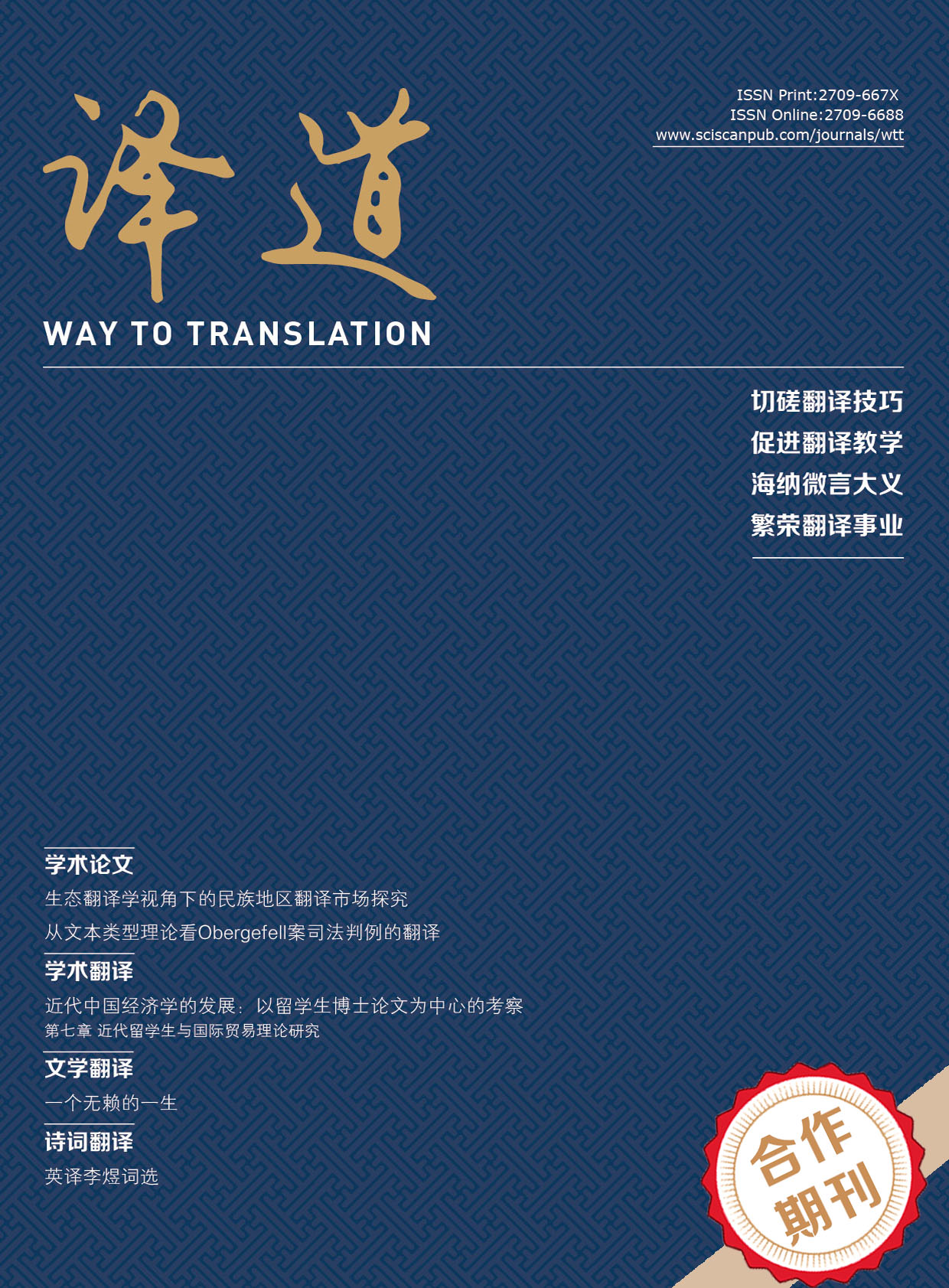免费订阅世刊出版平台最新发表资讯
儿童文学翻译的狂欢化叙事再造——以《玛蒂尔达》汉译为例
On the Representation of Carnival Narration in Children’s Literature Translation: A Case Study of the Chinese Versions of Matilda
- 作者: 张爱萍 滕梅
-
单位:
中国海洋大学外国语学院,青岛
- 关键词: 狂欢化叙事;儿童文学翻译;儿童本位;《玛蒂尔达》;再造
- Carnival narrative; Children’s literature translation; Child-orientation; Matilda; Representation
- 摘要: 狂欢化叙事是当代儿童文学的主要特点之一,狂欢化叙事的再造是儿童文学翻译的重中之重。本文以《玛蒂尔达》任溶溶汉译本为例,从人物形象、语言风格和场景等三个叙事要素探讨狂欢化叙事的翻译再造。研究发现,译者应在遣词造句时选择与原文感情色彩相当的褒义或贬义词,让译文焕发出狂欢化色彩;同时,译者要从儿童本位观出发,在翻译中不可将儿童的智慧弱化。此外,译者要把握狂欢化叙事再造的度,不要“过度异化”原文的狂欢色彩,用词不要过于乖张粗俗,以目的语读者的接受能力为先。
- The carnival narrative is one of the important features of contemporary children’s literature, and the representation of carnival narrative in children’s literature translation is of great significance to promote the development of children’s literature translation. This study takes the Chinese version of Matilda by Ren Rongrong as a case study and examines how a translator can better represent carnival narrative from three elements of carnival narrative: carnival characters, carnival language style and carnival scenes. It is found that the translator should choose words that are positive or derogatory in tone to the original, so as to give the translation a carnivalesque flavour. Moreover, the translator should start from a child-oriented view and should not weaken the intelligence of children in the translation. In addition, the translator should master the degree of carnival narrative representation, not to “over-alienate” the carnival content of the original text, and not use words that are too vulgar and excessive, but put the receptiveness of the target language readers first.
- DOI: https://doi.org/10.35534/wtt.0301001
- 引用: 张爱萍,滕梅.儿童文学翻译的狂欢化叙事再造——以《玛蒂尔达》汉译为例[J].译道,2023,3(1):1-7.














